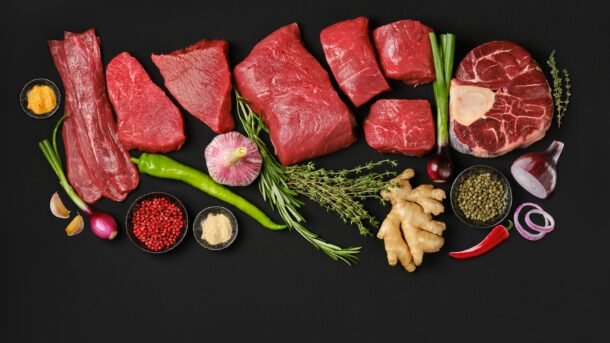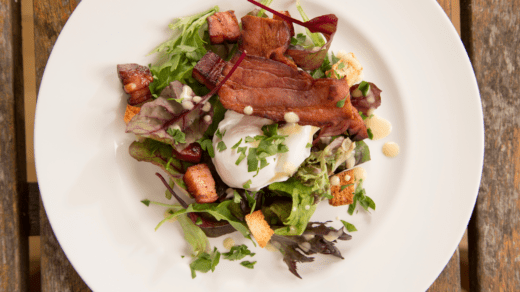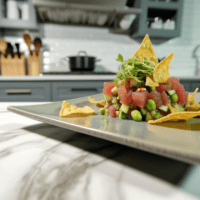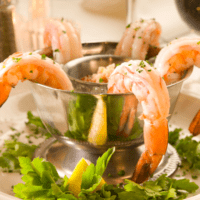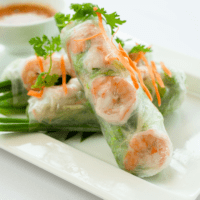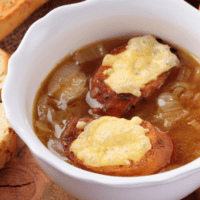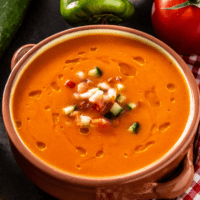Hey There! Some links on this page are affiliate links, which means that as an Amazon Associate, I may earn a small commission at no extra cost to you. I greatly appreciate your support! Learn more on my Affiliate Disclosure page.
Did you know the USDA lists just 8 primal cuts of beef? This is different from other sources, which talk about 9 or 10 cuts. Beef is a big part of what Americans eat; the cuts we buy usually come from these.
Knowing these first cuts is really important when shopping for beef. They help you choose the right one and how to cook it.
The 8 big cuts are Chuck, Rib, Loin, Round, Flank, Short Plate, Brisket, and Shank. These cuts are different from “Prime Cuts,” which are the best quality. After these 8 are separated, each is cut into smaller pieces. These become the steaks, roasts, and other beef items in stores.
Did you know Chuck and Round provide most of the meat in the US because they’re not too expensive? But cuts from the loin, like T-bone and Porterhouse, are pricier but tender. Also, round cuts cost less because they have less fat.
Knowing the basic beef cuts and what makes each special is key. This will help anyone who wants to pick, cook, and enjoy top-quality beef.
Next, we’ll talk about each of the 8 primal cuts. We’ll cover where they come from on the cow, the smaller cuts you see in stores, and how to cook them best.
Key Takeaways
- The USDA recognizes 8 primal cuts of beef, not 9 or 10 as commonly stated.
- Chuck and Round make up much of the beef we eat in the US because they’re not too pricey.
- Loin cuts, like T-bone and Porterhouse, are more costly but very tender.
- Round cuts are not as expensive because they have less fat.
- Knowing about each primal cut is important to choose and cook beef well.
Introduction
Knowing the different primal cuts of beef helps you choose the best ones for your cooking. These primal cuts are the main parts of the beef that get separated first when butchering. Understanding the location, features, and how to cook these cuts helps people make smart choices and cook beef perfectly.
Importance of Understanding Beef Cuts
Learning about beef anatomy and fabrication is key for anyone who loves good beef. Knowing the different primal cuts, their special qualities, and the best ways to cook them gives you a big advantage in the kitchen. This makes it easier to buy the right beef, leading to tastier and more tender meals.
Definition of Primal Cuts
Primal cuts are the big, main sections of the beef carcass that come first in butchering. They’re known by where they are on the animal, how much fat they have, their texture, and the best ways to cook them.
Knowing the definition of primal cuts is the first step in exploring all the beef varieties. This will help you choose the best cuts for any recipe or way of cooking.
Chuck

The chuck primal cut comes from the cow’s front chest, including the shoulder and neck. It’s full of flavor and can be used in many dishes.
This area produces parts like the neck, shoulders, and more. These are great when cooked slowly in the oven, but grilling is perfect for some cuts, like the blade.
Chuck steak and chuck filet are tasty but must be made tender first. This can be done by marinating or slow cooking.
Location and Description
The chuck primal cut is from the front part of the cow, near the chest. It includes the shoulder and neck. Known for its rich flavor, it has a lot of fat and connective tissue. This makes it chewier but perfect for slow cooking.
Sub-Primal Cuts
The chuck has many cuts, including neck, shoulders, and more. Options include ground beef, steak, and filet. This variety means there’s a cooking method for every dish or taste.
Cooking Methods
Slow cooking in the oven is best for the shoulder and neck parts of the chuck. It helps make the meat tender. On the other hand, cuts like the blade do well with quick grilling. This gives them a nice, crispy outside.
Chuck steak and chuck filet can be made in many ways. Yet, they also need to be tenderized before cooking. This step makes them softer and more enjoyable to eat.
Rib

The rib primal cut comes from the cow’s center back. It’s known for being tasty and tender, making it worth more. This cut includes meat from the sixth to the 12th ribs. The rest of the ribs down to the sternum are called the beef plate primal.
Sub-Primal Cuts
Sub-primal rib cuts are many, including rib steak and prime rib. There are also short ribs and back ribs. Boneless rib eye steaks and roasts are common. They have no ribs. But you can often find bone-in ribeye steaks, especially in restaurants. They’re known for a big version called the Cowboy Steak.
Bone-in beef back ribs have less meat because rib eye meat is pricier. Butchers often remove a small amount of meat from beef ribs to use in ground beef.
Cooking Methods
Prime rib is best cooked hot and fast in the oven or a smoker. Ribeye steaks are great for grilling over direct heat. Slow and low is best for back ribs and short ribs. They can be braised or smoked indirectly.
Primal rib cuts can be bought in stores, butcher shops, and some large retailers. If sealed well, raw beef can be kept in the fridge for four days and in the freezer for a year. Cooked beef can also be kept in the fridge for up to four days.
Loin

The loin primal cut is in the cow’s lower back. It gives us the most tender and pricey beef. This area is famous for cuts like T-bone, club steak, and more.
Sub-Primal Cuts
It has several sub-primal cuts with different textures and tastes. You’ll find favorites like T-bone and New York strip in this area.
Cooking Methods
Loin cuts are great when cooked to medium-rare. For these cuts, use methods like grilling or broiling. The tenderloin and tri-tip can be roasted for a softer meal.
| Loin Primal Cut | Description | Cooking Recommendations |
|---|---|---|
| T-bone, Club Steak, Porterhouse | Tender and flavorful, with both tenderloin and strip loin sections | Kook to medium-rare doneness using high-heat methods like grilling or broiling |
| Filet Mignon (Tenderloin) | Extremely tender and lean, the most expensive cut from the loin | Roast in the oven or grill over high heat |
| New York Strip | Flavorful and tender, with a slightly firmer texture than tenderloin | Grill over high heat or broil in the oven |
| Sirloin Steak | Moderately tender with a beefy flavor, a more affordable loin cut | Grill, broil, or pan-sear over high heat |
| Tri-Tip | Lean and flavorful, a relatively inexpensive loin cut | Roast in the oven or grill over high heat |
Round

The round primal cut comes from the back of the cow. It’s from the hip to the rear leg. Rounds have less fat, so they’re tough.
Types of round cuts are top round, eye of round, heel of round, sirloin tip, and bottom round. Because rounds are lean, cooking them slowly is best.
Sub-Primal Cuts
From the round primal, you get the top round, eye of round, heel of round, sirloin tip, and bottom round.
- The top round often has the semimembranosus and the adductor muscles. The top round cap is good for stir fry and fajitas. It’s like flank steak and is called the Santa Fe cut.
- The bottom or outside round is on the leg’s outside.
- The eye of round is great for roasting. It’s perfect when thinly sliced for sandwiches.
Flank

The flank primal cut sits below the loin in the belly area. It’s known for its great taste but can be tough. Marinating it is a good idea. You might know it as ground beef, London Broil, or flank steak.
Flank steak tastes the best when marinated for a long time and then cooked fast over high heat. This makes the meat tender and still juicy at medium doneness.
Sub-Primal Cuts
You can get ground beef, London Broil, and flank steak from the Flank Primal. Flank steak has a special taste and feel and is a favorite among meat lovers.
Cooking Methods
For the perfect flank steak, marinate it for a long time before cooking. This softens the tough parts. Then, cook it fast on a hot grill. This keeps it juicy and just right. Similar methods work well for cuts like London Broil, too.
Short Plate

The short plate is in the cow’s belly area below the rib. Here, you’ll find cuts like hanger steak, skirt steak, and short ribs. Hanger steak is great grilled medium-rare.
Skirt steak needs a good marinate before grilling. Cook short ribs slowly. They’re best when braised or smoked for a long time.
Sub-Primal Cuts
The short plate area has tasty cuts like hanger steak and short ribs. Hanger steak is known for being super tender, but there is only one per cow, making it rare. Skirt steaks are best when sliced thin for cooking.
Cooking Methods
The short plate has lots of fat. This makes it perfect for many cooking styles.
Hanger and skirt steaks are good on a hot grill, and short ribs love being cooked slowly over low heat. This cut also produces ground beef, which is great for dishes besides burgers, like fajitas and pastrami. It’s also a go-to for cold-weather braising meals.
| Cut | Characteristics | Optimal Cooking Method |
|---|---|---|
| Hanger Steak | More tender than skirt steak, with only one per cow | Grilled to medium-rare |
| Skirt Steak | Cut thin for best results; benefits from marinating | Grilled over direct heat after marinating |
| Short Ribs | Can be sold with or without bones, high-fat content | Braised or smoked low and slow |
Brisket

The primal cut of brisket comes from the cow’s breast and lower chest area. It’s a tough, lean cut that needs low and slow cooking to become tender. It’s below the chuck. Brisket is often called a primal or sub-primal cut, including brisket, flank, and plate.
Sub-Primal Cuts
The two main sub-primal brisket cuts are the brisket point and the brisket flat. This type of meat has been enjoyed in many ways in different cultures. It’s not just for classic smoked barbecue. You can find it in dishes like English corned beef, braised pot roasts, Montreal smoked beef, and various Asian recipes.
Cooking brisket also includes using spicy rubs and marinades and slow-cooking it over indirect heat with different woods, such as mesquite, hickory, and pecan.
Cooking Methods
The brisket point and flat work well for smoking or braising over hours. This makes them tender by breaking down the tough parts and melting the fat.
Brisket is known for being not too fatty, making it perfect for smoking over low heat. In Kansas City-style barbecue, the brisket is cooked until the ends are crispy and then served on white bread. It is used in many dishes and styles, showing its role beyond being smoked for barbecue.
Shank

The shank primal cut comes from a cow’s lower chest and abdomen. It includes cuts from the fore-shank (front legs) and hind-shank (rear).
Shank meat is tough and lean, with little fat. It is best cooked using moist heat methods, like braising or a slow cooker. You can also make ground beef from shank trimmings.
Cooking Methods
The shank primal is lean and tough because of the animal’s heavy use of these muscles. So, shank cuts are better when braised than grilled.
Osso Buco is a well-loved dish that uses the cross-cut shank. The shank’s bones are great for making soups and broths.
Overview of the Eight Primal Cuts of Beef

The eight primal cuts of beef are Chuck, Rib, Loin, Round, Flank, Short Plate, Brisket, and Shank. Each cut comes from a different part of the cow and varies in fat, texture, and the best ways to cook it. This information is key for those who want to buy, prep, and cook beef well.
| Primal Cut | Description | Sub-Primal Cuts | Optimal Cooking Methods |
|---|---|---|---|
| Chuck | Located in the front chest and neck area, Chuck is a versatile and flavorful cut. | Neck, shoulders, top blade, bottom blade, ground beef, chuck steak, chuck filet. | Shoulder and neck should be cooked at low heat in the oven. Blade cuts are great for grilling over direct heat. Chuck steak and chuck filet need to be tenderized before cooking. You can cook them in the oven, skillet, or on the grill. |
| Rib | Located in the center back of the cow, the rib is a flavorful and tender cut. | Rib steak, ribeye steak, prime rib, short ribs, and back ribs. | Cook prime rib on high heat for a short time, either in the oven or on a smoker. Grill ribeye steak over direct heat. For back ribs and short ribs, cook on low heat for a longer period. This could be braising or using indirect heat to smoke them. |
| Loin | Located in the cow’s lower back, the loin produces some of the most tender and expensive beef cuts. | T-bone, club steak, filet mignon (tenderloin), New York strip, sirloin cap, sirloin steak, tri-tip, Chateaubriand, and Porterhouse. | Cook these cuts to medium-rare doneness. Use high-heat methods like grilling or broiling. You can also roast the tenderloin and tri-tip in the oven. |
| Round | Located in the rear part of the cow, rounds are lean with less fat. | Top round, eye of round, heel of round, sirloin tip, and bottom round. | Rounds are lean, so they are best with low and slow cooking. This means braising or roasting in the oven, not grilling with high heat. |
| Flank | Located in the belly, under the loin, the flank is both flavorful and tough. | Ground beef, London Broil, and flank steak. | For flank steak, marinate for a while, then cook quickly over high heat, like on a grill. This makes it tender and juicy at medium doneness. |
| Short Plate | Located below the rib, in the center belly area of the cow. | Hanger steak, skirt steak, and short ribs. | Grill hanger steak to medium-rare. Skirt steak should be marinated before grilling. For the most tenderness, cook short ribs long and slow by braising or smoking. |
| Brisket | The brisket is a tough, lean cut located at the cow’s breast and lower chest area. | Brisket point and brisket flat. | Smoke or braise brisket for several hours. This breaks down its connective tissue and renders the fat. |
| Shank | Located in the lower abdomen and chest area of the cow, shank meat is very tough and sinewy. | Fore shank and hind shank. | Use moist heat methods to cook shank cuts. This includes braising or long, slow cooking in the oven or a slow cooker. You can make ground beef from shank trimmings. |
Selecting Quality Beef

Deciding on beef means considering whether the cows ate grass or grains. Grass-fed beef comes from cattle that forage on grass. It is often seen as more nourishing than grain-fed beef. That’s because cattle eat natural foods instead of grains in feedlots.
The USDA rates beef quality based on marbling, color, and texture. Prime, Choice, and Select are the top grades. Understanding these details helps you pick the best beef for you.
Grass-fed vs. Grain-fed
Grass-fed beef is from cattle eating grass and forage. It’s leaner and seen as healthier and tastier. On the other hand, grain-fed beef is fattier. This is because these cattle are fed mainly grains to grow big and get more marbling.
Grading System
The USDA grader system checks beef quality and uniformity. It considers marbling, color, and maturity. Prime, Choice, and Select are the top grades. Prime is best but costs more. Knowing these grades helps you find the right beef cuts for cooking or flavor preferences.
| USDA Beef Grade | Characteristics |
|---|---|
| Prime | Highest level of marbling, most tender and flavorful |
| Choice | Moderate to a high level of marbling, tender and flavorful |
| Select | Minimal marbling, less tender and flavorful than higher grades |
| Standard, Commercial, Utility, Cutter, Canner | Lower-quality grades, often used for ground beef or lower-cost cuts |
Butchery and Fabrication

Breaking down a beef carcass into different cuts is called beef fabrication or butchery. Skilled butchers use special tools, such as boning knives and meat saws, to cut the animal precisely.
Knowing the process and tools helps us understand how beef cuts are made. The right butchery techniques are key to getting the most meat and the best cuts.
Breakdown Process
Butchers first turn the beef carcass into big pieces like chuck, rib, loin, and round. This is the beef fabrication part. Then, they cut these into smaller parts called sub-primal cuts. Doing this lets them use the whole animal well and gives people many choices in meat cutting.
Specialized Tools
Skilled butchers need special meat-cutting tools to work swiftly and accurately. They have sharp boning knives, bone cleavers, and meat saws for the big parts.
Butchers must know how to use these tools. This way, they can get the most from the meat and make it look good.
Health and Nutritional Considerations

Choosing the right beef means considering nutrition and fat. Lean beef, like round or sirloin, has less fat and more protein. On the other hand, beef from the chuck or rib can be fattier. The leaner cuts are perfect for those watching fat intake and portion sizes.
Fattier cuts have more calories and saturated fat, but they also have more marbling and stronger flavors. Knowing this difference lets you choose what’s best for you.
Getting the right beef portion sizes is key to a healthy diet. This helps balance your protein and fat intake. Mixing up your beef choices and portion-watching lets you savor beef’s benefits while keeping your diet healthy.
Cultural and Regional Influences

Beef is used differently in various cultures and areas. Korean barbecue, Texas smoked brisket, and Italian braised short ribs all show how beef is key in local cuisine.
Terms for beef vary, too, with names like flap meat in the East and steak tips in the West for the same thing. This shows the rich diversity in how we talk about food.
Traditional Dishes and Preparations
These cultural insights can spark new ideas for cooking beef at home. The ribeye steak is a favorite worldwide and is known by different names, such as Delmonico or Spencer steak.
The tenderloin steak is also very popular. It is known for being very tender and goes well with many flavors, making it a versatile choice. The culotte, a top cut in South America, is another example.
In places influenced by the UK, a porterhouse steak is sometimes labeled differently (as a boneless New York strip steak), unlike the usual American way.
Conclusion

In conclusion, there are eight core cuts of beef: Chuck, Rib, Loin, Round, Flank, Short Plate, Brisket, and Shank. Each has special traits, the best way to cook it, and its role in cooking. Knowing these beef types helps you buy and cook beef dishes wisely. It also opens up many chances to use beef in cooking. Being familiar with these beef cuts is important if you love cooking or eating meat at home.
Think about picking a delicious ribeye steak, slowly cooking a tender brisket, or trying cuts like hanger steak or flank. Understanding beef cuts helps you create tasty and fulfilling meals. With knowledge about each cut, you can do much more in your kitchen and enjoy cooking beef even more.
As you learn more about beef cuts, consider things like marbling, grading, and where the beef comes from. Great cooking starts with knowing about the different cuts, their quality, and how to prepare them. This knowledge will improve your cooking with beef, taking your meals to a new level.
Thank you for reading! If you enjoyed this article, follow us on social media and subscribe to our blog for more delicious articles, recipes, and cooking tips.
Happy cooking!
FAQ – Frequently Asked Questions

What are the 8 primal cuts of beef?
The 8 primal cuts of beef are Chuck, Rib, Loin, Round, Flank, Short Plate, Brisket, and Shank.
Why is understanding primal cuts of beef important?
Knowing the cuts for different dishes and cooking methods is key. This information helps people buy wisely and cook beef perfectly.
What are the sub-primal cuts from the chuck primal?
The chuck has cuts like neck and shoulders. It also includes top blade, bottom blade, ground beef meat, chuck steak, and chuck filet.
How should rib primal cuts be cooked?
For prime rib, high heat for a short time is great. You can use an oven or direct heat smoker. Ribeye steaks should be grilled over direct heat.
Back ribs and short ribs are best cooked low and slow. You can braise them or use indirect heat when smoking them.
What are the sub-primal cuts from the loin primal?
Loin cuts include T-bone and club steak. There’s also filet mignon, New York strip, sirloin cap, sirloin, tri-tip, Chateaubriand, and Porterhouse.
How should round primal cuts be cooked?
Round cuts are lean, so cook them using low and slow methods. Braising or roasting in the oven is better than grilling at high heat.
What are the sub-primal cuts from the flank primal?
The flank primal gives us ground beef, London Broil, and flank steak.
How should flank steak be cooked?
Marinate flank steak for a while. Cook it fast over high heat, like on a grill, to make it tender and juicy.
What are the sub-primal cuts from the short plate primal?
The short plate has hanger steak, skirt steak, and short ribs as sub-primal cuts.
How should brisket be cooked?
Braise or smoke brisket for several hours. This helps to make the meat tender and taste great.
What are the two main sub-primal cuts from the brisket primal?
The brisket point and brisket flat are the main sub-primal brisket cuts.
How should shank cuts be cooked?
Shank meat is tough. It’s best cooked using moist heat, like braising, or with long, slow cooking.
What is the difference between grass-fed and grain-fed beef?
Grass-fed beef is leaner and seen as more nutritious. It comes from cows that eat grass and forage, not grains in a feedlot.
How does the USDA grading system work for beef?
The USDA rates beef by its marbling, color, and texture. The best grades are Prime, Choice, and Select.
What tools are used in the beef butchery process?
Butchers use tools such as boning knives, cleavers, and meat saws to help break down the beef carcass.
How do the fat and calorie contents vary between different beef cuts?
Beef cuts differ in fat and calories. Lean cuts like round and sirloin have less fat and more protein than cuts from the chuck or rib.
How do different cultures and regions influence the preparation of beef?
Each culture has its own way of cooking beef. From Korean barbecue to Texas-style brisket and Italian short ribs, beef cuts match unique cooking styles and flavors.
Source Links
- https://themeatstick.com/blogs/tips-recipes/the-primal-cuts-of-beef
- https://sclydeweaver.com/blog/the-different-cuts-of-beef/
- https://www.thespruceeats.com/beef-rib-primal-cut-995250
- https://www.beststopinscott.com/a-guide-to-meat-the-8-cuts-of-beef/
- https://www.thespruceeats.com/beef-round-primal-cut-995261
- https://thousandhillslifetimegrazed.com/beef-cuts/short-plate/
- https://www.acabonacfarms.com/blogs/in-the-kitchen/the-primal-cuts-of-beef-brisket
- https://www.christensenranch.com/cuts-of-beef/
- https://www.marketsatshrewsbury.com/blog/recommended-beef-cuts/
- https://animalrangeextension.montana.edu/beef/documents/CarcassBreakdown.pdf
- https://www.ecpi.edu/blog/meat-fabrication-terminology
- https://www.theculinarypro.com/meat-and-poultry-fabrication-methods
- https://www.ncbi.nlm.nih.gov/pmc/articles/PMC5112419/
- https://www.primalmeats.co.uk/nutrition-beyond-measurables/
- https://www.ncbi.nlm.nih.gov/pmc/articles/PMC4726967/
- https://www.meatchris.com/blog/2017/8/6/meat-cuts-heard-around-the-world
- https://atomieats.medium.com/a-comprehensive-guide-to-the-different-cuts-of-beef-f38b5d0e9a61
- https://queensprimemeatshop.com/find-the-perfect-cuts-of-steak/
- https://3lakesranch.net/blogs/blogs/quick-guide-to-beef-cuts-and-recommended-cooking-methods
Hey There! Some links on this page are affiliate links, which means that as an Amazon Associate, I may earn a small commission at no extra cost to you. I greatly appreciate your support! Learn more on my Affiliate Disclosure page.

